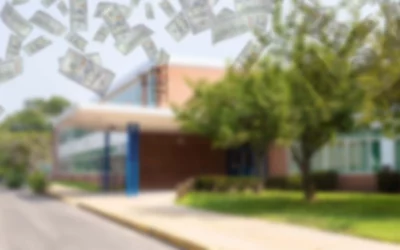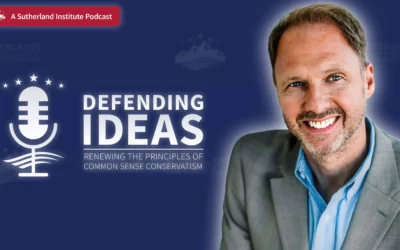
Written by Christine Cooke Fairbanks
February 8, 2023
The 2023 legislative session has featured a lot of discussion about education choice and intense debate around private school choice, particularly with the passage of HB 215. Though the state has made significant policy changes this year that support families in funding new education options, the reality is that the vast majority of Utah (and U.S.) students still attend their public district school.
What is a public district school?
A district school is a public school under the authority of an elected local school board, paid for with federal, state and local tax dollars and within the organization of a geographical area called a school district. Students are assigned to schools geographically, which means the ZIP code of their residence helps assign them to their district school.
Parents of school-age children may choose a district if they are seeking a tuition-free education with a consistent schedule and the opportunity to have their children attend school with any other children living in their area.
A quick history
Today’s understanding of the public district school comes in large part from the early philosophies of Horace Mann and John Dewey. Mann led the common school movement in the early 1800s. Dewey pushed for a progressive public education in the late 1800s and early 1900s.
In fact, Mann’s advocacy for the common school – a school for all children in an area – is what we still largely have today in public schools across the nation: school delivered and funded by the state, universally accessible and free from sectarian (religious) control.
Dewey viewed public education as a tool of social reform and democracy, which is still how public schools are perceived and championed. District schools today are seen and utilized as important centers of the community. Because they are tasked with teaching all children, they are subject to the control of state and local elected officials.
A look at the nation
As of the 2020-21 school year, there were 98,577 public schools in the United States. This number is actually down from the 2018-19 school year (98,755 public schools) and even down from the 2009-10 school year (98,817 public schools). However, there were other variations between 2009-10 and 2020-21.
There is a similar story in enrollment numbers. In the fall of 2021, there were 49.5 million students enrolled in public schools across the nation from pre-kindergarten to grade 12, which was slightly higher than the year before when 49.4 million students were enrolled, meaning enrollment grew by roughly 78,100 students. But fall enrollment in 2020 and 2021 was down compared with 2019 (50.8 million students) and every year prior to that since 2010.
A look at Utah
Utah’s enrollment numbers show general growth over the past decade and some slumps in recent years. In fall of 2022, for instance, there were 596,899 students enrolled in district schools, down a little (-0.1%) from the previous fall, when there were 597,461 students enrolled. (Even among all public schools, data published in 2022 shows that 88% of Utah public school students attend district schools while only 12% attend public charter schools.)
Still, the data around the timing of the pandemic tell an interesting story. Between fall of 2019 and fall of 2020, enrollment in district schools dropped from 589,773 students to 587,354 students (-0.4%). However, between fall of 2020 and the next year, it grew 1.7%. So, the pandemic did not have a consistent impact year to year on enrollment in district schools.
Still, projections for fall 2023 suggest 0% growth in enrollment. Slowing growth in public district school enrollment is likely being driven by several factors, including demographic change as a significant likely driver, as well as a potential ripple effect from pandemic-driven enrollment changes.
While changes to enrollment do require our attention and policy support in offering educational options, the majority of students are still attending public district schools. Policymakers should consider how to best support those students, since the next generation is largely being prepared for their futures in these schools.
More Insights
Read More
How much money did the top ten ranking high schools spend per student?
Research suggests that the issue is complicated, that money does matter for school performance, and how it’s spent matters a great deal.
Why we need to fix Social Security within 10 years
On this episode we sit down with an expert to dispel some of the myths about the state of retirement today and offer a framework for how to fix Social Security before it’s too late.
Conservatives’ Golden Opportunity to Win the Minimum-Wage Argument
Election year offers conservatives an opportunity to deliver a pro-worker message that can win over persuadables on the minimum-wage debate.


